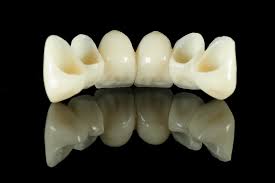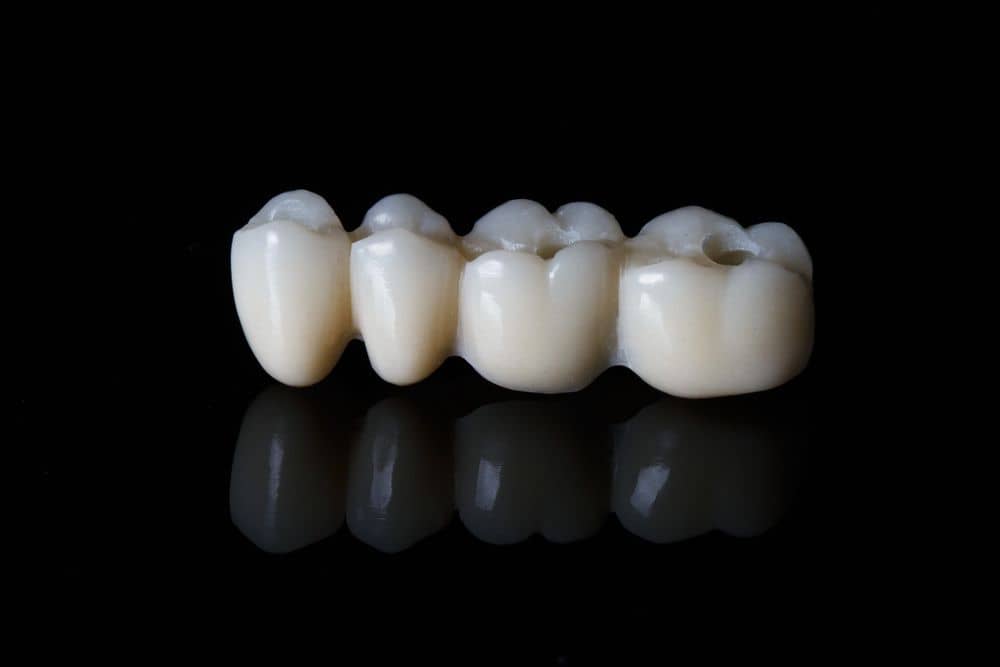Retained bridges, sometimes referred to as resin-bonded bridges or resin-bonded fixed dental prostheses (RBFDP), are fixed dental prostheses that replace lost teeth and are held in place by composite resin cement. It is one of several dental restoration techniques that are thought to be minimally invasive and gentle on tooth structure. There have been several revisions to the resin-retained bridge. The Maryland bridge is arguably the most well-known, while other designs have been utilized in the past, such as the Rochette bridge. The survival rate at five years is approximately 83.6%, while at ten years it is 64.9%. As with any dental prosthesis, the choice of case is crucial, and maintaining proper oral hygiene is essential to its success. The indications for using resin-retained bridges have dramatically decreased in recent years. When a fixed prosthesis held in place by natural teeth is needed, resin-retained bridges should be taken into consideration. It has the advantages of less tooth preparation and the significance of an intact enamel structure for the teeth’s long-term health. For these reasons, the bridge is currently popular in the United Kingdom. In fact, more recent studies have demonstrated that resin-retained bridges are less expensive and have higher success rates than implants.
Contents
Parts of Resin-Bonded Prosthesis
Framework
A resin-bonded bridge is made out of a cast metal framework that is cemented to one or more abutments that have had limited enamel preparations.
Retainer
The wing or retainer, which is often made of a metal alloy, needs to be stiff. The inner surface and the abutment tooth must fit closely. The retaining wing of a modern resin-retained bridge is often sandblasted using alumina powder. A large portion of the sound enamel must be engaged by the metal wing. The metal wing is usually applied to the incisal edge of the anterior teeth and overlaps the tooth’s occlusal (biting) surface in the case of the posterior teeth.
Pontic
The pontic is usually made from dental porcelain. The whole restoration is thus a porcelain-fused-to-metal restoration.

Indications
- If the abutment tooth structure is sufficient to etch for retention,
- It is used for splinting of periodontally compromised (weak at gum level) teeth
- When the patient require permanent retainers after orthodontic treatment
- Medically compromised patients who cannot withstand long procedures like fixed partial dentures and implants
contraindications
- When patient has abraded teeth and there is no minimal occlusal clearance of 2-3mm
- Overlapping of upper and lower teeth
- Inadequate enamel surface to etch
- Patient having sensitivity to base metal alloys
- Highly aesthetic demands
benefits
- Minimally invasive procedure. This procedure doesn’t require any tooth cutting or surgical procedure
- Cost effective procedure
- Requires less time
drawbacks
- Highly technique sensitive procedure
- It is little bit difficult to clean as plaque accumulation is more
- Bulky contours can be intolerable in sensitive patients
- It is not an ideal procedure for more than 1 missing tooth
types of resin bonded bridges
rochette bridge
It is the first type of Resin Bonded Prosthesis. It uses wing like retainers with funnel shaped perforation, with the base towards the tooth surface.

advantages
It is the most common and widely used designs
disadvantages
When resin is pressed over perforations, resin leaches out of them, and that is subjected to external stress and abrasion.
maryland bridge
This design is developed to overcome the shortcomings of the Rochette bridge. Here, microporosities are used for the retention of the prosthesis on the retainer.
These microporosities are created by etching the tissue surface of the retainer.
cast mesh FPD
In this type of fixed partial denture, etching is not required. A nylon mesh is placed before fabricating the wax pattern on the retainer.
Drawbacks
Sometimes, during the casting technique, nylon mesh may not adapt well to the retainer.

virginia bridge
These type of resin bonded fixed partial dentures uses the particle roughened retainers. The wax patterns of the retainers are fabricated by the resin. Before the fabrication of resin, salt particles of size 150-250 micrometer are sprinkled over it. The salt crystals get incorporated into the resin pattern. The salt crystals gets dissolved during the investment and voids are created in the resin pattern. These voids will help in increasing the retention.
Benefits
Surface treatment like etching is not required
Noble metal alloys can be used

Complications of resin bonded bridges
The failure mode of a resin-retained bridge is likely to involve debonding of the retainer, which is one of its main advantages over a traditional bridge. When a traditional bridge fails, the abutment tooth may completely fracture and experience difficult-to-manage consequences that may necessitate root canal therapy. With a resin-retained bridge, the patient typically experiences the least amount of inconvenience when cleaning and rebonding the prosthesis into place.
Resin-retained bridges can have several issues, the most prevalent of which being porcelain fracture and debonding.
Debonding
Porcelain fracture
Fracture of the Framework
Resorption of roots
Fracture of the retained cusp
Periodontitis-related abutment loss
Minimal rotation
Caries





